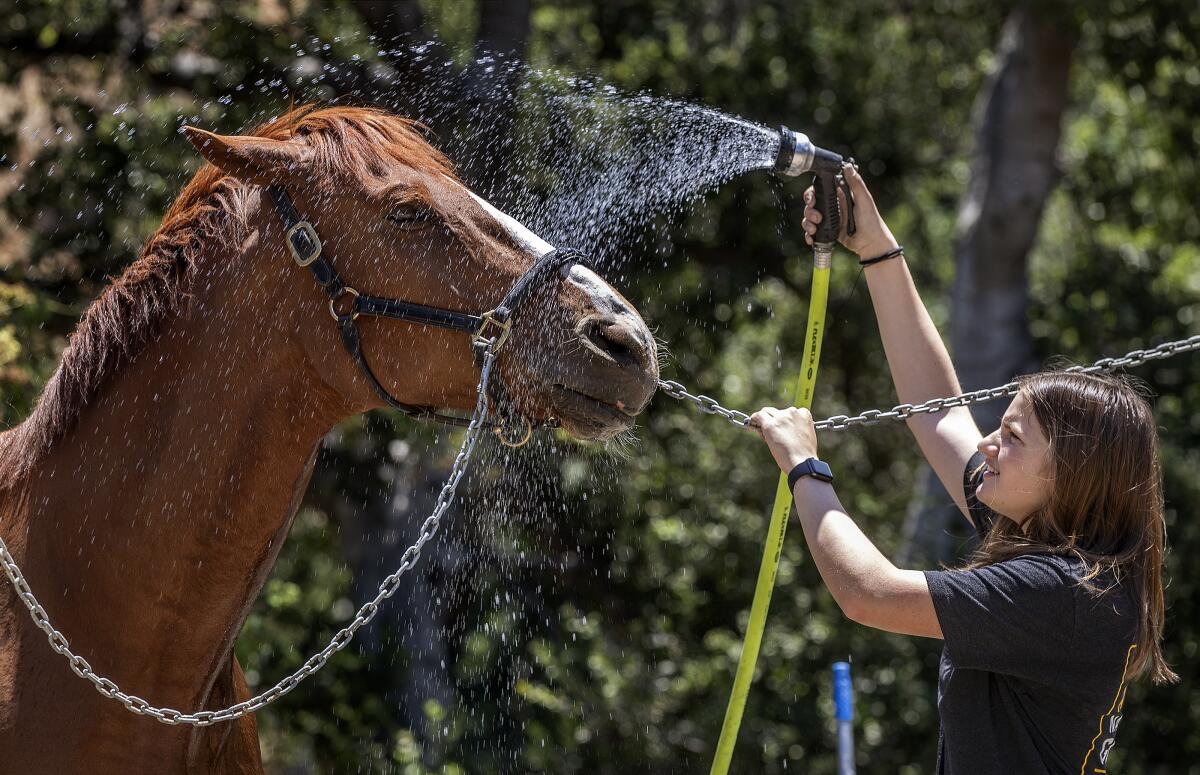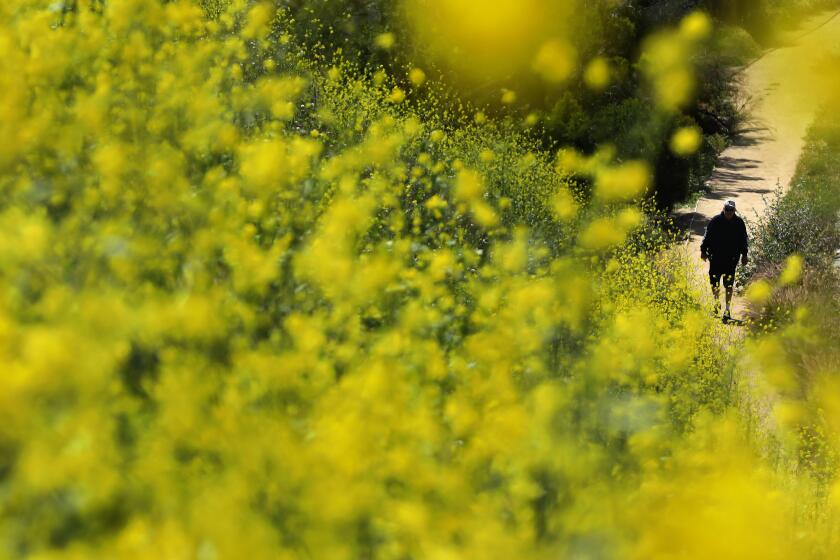No fly zone: Swath of Santa Clarita Valley under quarantine due to invasive tau fruit fly

- Share via
A swath of the Santa Clarita Valley is under a first-of-its-kind quarantine after the invasive and pestilent tau fruit fly was found in the area, officials announced this week.
The quarantine went into effect July 11, after more than 20 flies were found in the area of Stevenson Ranch, the California Department of Food and Agriculture said in a release. The flies were probably introduced to the area by travelers who brought uninspected produce from out of state.
The action marks the first-ever tau fruit fly quarantine in the Western Hemisphere, state officials said.
Unlike quarantines implemented in response to COVID-19, however, this one is not for people but for fruits and vegetables.
Plants like Sahara or black mustard, common in Southern California but not native to it, can strangle native flowers and pose fire danger.
Native to Asia, the yellow-and-black tau fruit fly is a serious pest for plants — with a wide host range that includes numerous fruits and vegetables, as well as some native California plants, the department said.
Residents in the 79-square-mile quarantine zone are advised to not “move any fruits and vegetables from their property,” according to the department’s statement.
Produce can be consumed, cooked or juiced onsite.
“Otherwise, they should be disposed of by double-bagging in plastic” and placed “in a bin specifically for garbage,” the department said.
Officials said the circular quarantine zone is roughly bordered to the north by Castaic Junction, the south by Oat Mountain, west by Del Valle Road and east by Honby Avenue. A detailed map can be viewed here.
The Food and Agriculture Department will work with the U.S. Department of Agriculture and Los Angeles County agricultural commissioner to eliminate the fly and prevent its spread.
On properties within a 200-meter radius of where flies have been detected, “staff will cut host fruit and vegetables to inspect for any fruit fly larvae that may be present,” according to the California Department of Food and Agriculture.
Properties will also be treated with Spinosad, a “naturally derived organic-approved material” to remove adult flies, officials said. Responders will also use fly traps.
More to Read
Sign up for Essential California
The most important California stories and recommendations in your inbox every morning.
You may occasionally receive promotional content from the Los Angeles Times.















